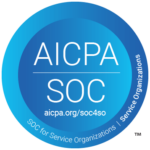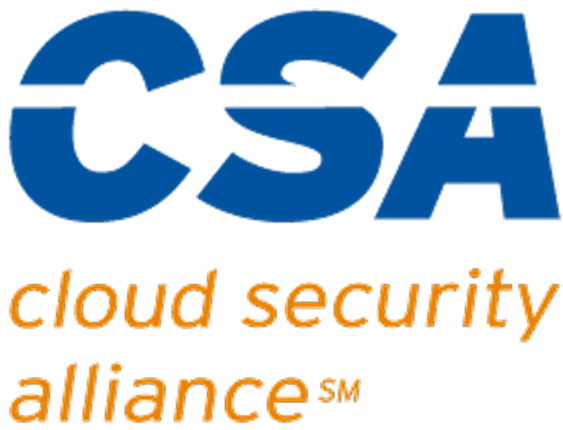The right IT tools can significantly enhance productivity. Companies rely on effective tools to manage tasks, communicate efficiently, and streamline operations. By implementing these solutions, organizations can ensure that their teams work smarter, not harder. Increased productivity translates directly to improved performance and a competitive edge.

This article explores seven essential IT tools designed to boost productivity across various organizational functions. From project management software that simplifies task tracking to cybersecurity tools that protect sensitive data, these resources empower teams to achieve their goals more effectively. Dive into each category to discover how adopting these technologies can transform your work and drive sustained organizational success.
Project Management Software
Project management software enhances productivity by streamlining task assignments and tracking. With dedicated platforms, teams can efficiently distribute tasks to members and outline specific project timelines. For instance, tools like Asana or Trello allow users to create boards that visualize work progress through various stages. This clarity reduces confusion regarding responsibilities and deadlines, ensuring everyone is aligned with the project’s goals.
Collaboration becomes effortless using project management software. These tools often include features such as file sharing, commenting systems, and real-time updates that enable team members to communicate effectively. Whether you are working on a marketing campaign or a product launch, software like Monday.com fosters teamwork by allowing groups to discuss issues directly within tasks. This integrated approach minimizes the back-and-forth of email exchanges and accelerates decision-making.
Enhanced reporting capabilities provide teams with insightful overviews of their projects. Most project management tools have dashboard features that showcase metrics like task completion rates and resource allocation. Programs like Microsoft Project ensure that leaders have access to critical data at their fingertips. Effective reporting promotes transparency and helps identify bottlenecks early on, enabling proactive measures to keep projects on track.
In summary, adopting project management software transforms how teams operate by improving task assignment efficiency and collaboration while offering robust reporting tools for better oversight. By leveraging these features, organizations can significantly boost their productivity and execute projects more efficiently.
Communication Platforms
Effective communication is vital for productivity in any organization. Communication platforms centralize discussions, reducing the clutter of excessive email threads. This streamlined approach lets team members focus on what matters most without sifting through countless emails. For example, Slack or Microsoft Teams help teams organize project-related conversations within designated channels. By doing so, users can quickly find relevant information and stay updated on ongoing tasks.
Another significant advantage of these platforms is their real-time messaging capabilities. Teams can make quicker decisions and resolve issues instantly rather than waiting for email responses. When a question arises during a meeting or while working on a project, team members can post their queries on the platform and receive immediate feedback. For instance, developers who face an obstacle while coding can message their teammates directly for assistance, expediting problem-solving processes.
Moreover, communication platforms often include video conferencing features that cater to remote teams distributed across different locations. Tools such as Zoom and Google Meet allow participants to interact virtually, promoting better collaboration. Hosting regular virtual meetings helps maintain alignment among team members and reinforces connections that may otherwise diminish due to physical distance. These capabilities ensure that remote teams can foster effective relationships and sustain productivity.
In conclusion, adopting communication platforms significantly enhances workplace productivity by centralizing communication, enabling real-time messaging for quick decision-making, and supporting video conferencing for seamless collaboration among remote workers. Organizations looking to improve overall performance should consider integrating these IT tools into their workflow strategies.
Time Management Tools
Effective time management is essential for productivity in today’s fast-paced business environment. Time management tools allow users to prioritize tasks, ensuring that critical projects receive the attention they deserve. Tools such as Trello or Asana enable professionals to create task lists, set deadlines, and rank activities based on urgency and importance. By visualizing these priorities, teams can focus on what matters without getting lost in non-essential tasks.
Additionally, time-tracking features within these tools offer valuable insights into how team members allocate their work hours. Applications like Toggl and Harvest allow users to record the time spent on various projects and tasks. This data clarifies productivity trends and identifies areas where efficiency can be improved. Knowing which activities consume the most time helps teams refine their workflows and adjust focus accordingly.
Furthermore, effective appointment and deadline scheduling drives collaboration among team members. Digital calendars integrated with applications such as Google Calendar or Microsoft Outlook facilitate real-time updates for meetings and deadlines. Features like automatic reminders ensure that important dates are not overlooked while enabling seamless coordination between team members’ schedules. Adopting these tools helps individuals establish a structured routine that promotes accountability and reduces last-minute scrambles.
Fostering strong time management skills through dedicated tools lays the groundwork for enhanced workplace productivity. Organizations should explore different options to determine which ones align best with their operational needs. Prioritization, tracking, and efficient scheduling form a robust framework to maximize overall output while minimizing potential stressors related to deadline pressures.
Cloud Storage Solutions
Cloud storage solutions have revolutionized the way businesses manage their data. With secure access to files from anywhere, team members can work remotely without compromising accessibility. For example, a marketing team can collaborate on campaign proposals from different locations using tools like Google Drive or Dropbox. This flexibility ensures that urgent tasks are handled promptly, aiding in maintaining productivity even when employees are not physically present in the office.
Cloud storage platforms simplify collaboration, enabling easy sharing of documents and resources. Team members can edit and comment on files in real time, eliminating the hassle of sending countless email attachments. Tools like Microsoft OneDrive allow teams to maintain version control while working together on projects. Such capabilities streamline communication and reduce misunderstandings that often occur when multiple document versions circulate among colleagues.
In addition to enhancing collaboration, cloud storage reduces reliance on physical storage space. Businesses no longer need extensive server rooms or filing cabinets; all essential documents reside securely in the cloud. This transition leads to more efficient use of office space and lowers costs associated with maintaining physical infrastructure. Organizations can focus more resources on core operations by utilizing solutions like Box or Amazon S3 rather than managing bulky hardware.
Overall, embracing cloud storage solutions transforms how teams approach project management and file organization. With instant access, improved collaboration features, and reduced need for physical space, businesses set themselves up for heightened efficiency and productivity growth in an increasingly digital world.
Automation Software
Automation software significantly enhances productivity by eliminating repetitive tasks that consume valuable time. By streamlining workflow processes, this technology allows teams to focus on more strategic activities rather than mundane operations. For instance, marketing departments can automate email campaigns, scheduling them to send at optimal times based on customer engagement data. This reduces manual effort and ensures timely communication with minimal oversight.
Furthermore, automation software integrates various tools into cohesive systems, making it easier for teams to access and manage information seamlessly. Consider how a sales team may utilize a customer relationship management (CRM) platform combined with automated reporting tools. This integration can automatically generate weekly performance reports, pulling data from different sources without requiring manual entry. As a result, team members spend less time gathering information and more time analyzing trends and improving sales strategies.
Finally, automation is crucial in reducing human error in data handling. Manual data entry and processing are prone to mistakes that can lead to significant issues down the line. With automation software, tasks such as invoice generation or inventory updates occur accurately and consistently. For example, accounting departments using automated invoicing software minimize discrepancies by ensuring all transactions are tracked systematically and reported correctly.
In conclusion, investing in automation software is an effective strategy for any organization looking to boost productivity and efficiency. By streamlining workflows and minimizing human intervention, businesses can allocate resources more strategically while maintaining high levels of accuracy across their operations.
Cybersecurity Tools
Protecting sensitive information is vital for any organization. Cybersecurity tools are the first line of defense against data breaches and cyberattacks. They offer various functionalities, including firewalls, encryption, and intrusion detection systems that safeguard confidential data from unauthorized access. Implementing robust cybersecurity solutions protects your business assets and builds trust with clients and stakeholders who expect their data to remain secure.
Advanced cybersecurity solutions provide indispensable real-time monitoring capabilities. These tools continuously analyze network activity to identify suspicious behaviors or potential threats. For instance, if an unusual login attempt occurs after hours, the system can alert IT personnel immediately, allowing them to address the issue before it escalates into a full-blown breach. This proactive approach significantly reduces response time and mitigates the risk of critical data loss.
Compliance with industry regulations like GDPR or HIPAA is another essential aspect where cybersecurity tools play a crucial role. Many of these tools are designed to protect and ensure adherence to strict privacy laws governing data handling practices. By utilizing comprehensive security solutions that automate compliance reporting and audit trails, organizations can streamline their regulatory processes while minimizing the likelihood of costly penalties associated with non-compliance.
Investing in cybersecurity measures enhances overall productivity within teams by fostering a more secure working environment. When employees feel confident in the security of their digital workspace, they can focus on their tasks without fear of impending cyber threats. As technology continues to evolve, so must your organization’s approach to cybersecurity; staying updated with current trends in cybersecurity tooling is imperative for sustained protection and operational efficiency.
Analytics Tools
Analytics tools play a pivotal role in enhancing productivity within organizations. They provide valuable insights into team performance and project progress, enabling managers to assess how effectively teams meet their objectives. For instance, platforms like Tableau or Google Analytics allow businesses to visualize data trends over time. By reviewing these visual representations, leaders can identify whether projects are on track or require adjustments, thus ensuring alignment with overall business goals.
In addition to tracking performance, analytics tools help pinpoint areas for improvement through thorough data analysis. Organizations can uncover bottlenecks that hinder progress by examining metrics such as task completion rates or resource utilization. This insight allows team leaders to implement targeted strategies to address specific challenges and optimize workflows. A department that previously struggled with deadlines might discover they need better resource allocation, leading to improved efficiency.
Moreover, analytics tools facilitate informed decision-making based on measurable outcomes rather than intuition or guesswork. Organizations can leverage reports generated from these tools to guide strategic discussions during meetings. For example, sales teams may use analytic dashboards to evaluate the effectiveness of marketing campaigns and adjust tactics accordingly. As a result, decisions become more data-driven and are more likely to yield positive results.
In conclusion, adopting analytics tools is essential for any organization aiming to boost productivity. These instruments enable teams to gain crucial insights into their operations while fostering an environment where informed decision-making drives continuous improvement. Integrating analytics into everyday practices ensures organizations stay ahead of the curve in today’s fast-paced business landscape.
Maximize Your Productivity with Essential IT Tools
In this article, we have highlighted seven types of IT tools that can significantly enhance productivity within your organization. Project management software helps streamline task tracking and improve collaboration. Communication platforms reduce email clutter and facilitate quick decisions. Time management tools ensure efficiency in scheduling and prioritizing tasks. Cloud storage solutions provide secure access to documents while promoting easy sharing. Automation software eliminates repetitive processes, allowing teams to focus on more critical tasks. Cybersecurity tools protect sensitive data and maintain compliance, while analytics tools deliver insights for informed decision-making.
It is crucial to regularly assess your current tool usage to identify opportunities for improvement. Evaluate how effectively each tool meets your team’s needs. Implementing these recommendations will empower your team to work smarter and achieve greater results. Prioritize adopting these essential IT tools to drive your productivity forward today.




